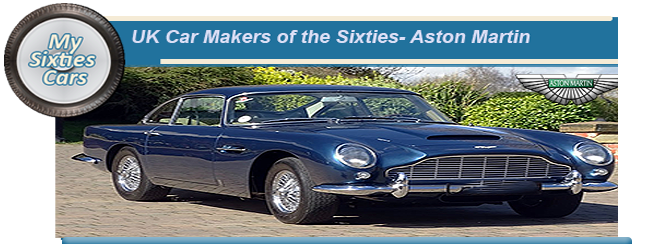
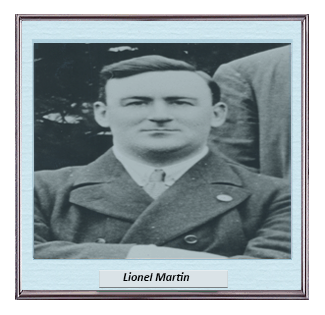 Bamford and Martin got together to form a company that would market and maintain Singer motor cars.
Bamford and Martin got together to form a company that would market and maintain Singer motor cars.
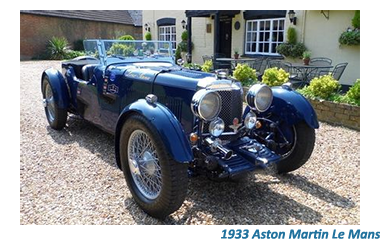 The first years of their business were stable although the pair began to form the opinion that to really carve out their place in the fast-developing industry was to make the transition into producing their own vehicles.
The first years of their business were stable although the pair began to form the opinion that to really carve out their place in the fast-developing industry was to make the transition into producing their own vehicles.
They achieved their dream in 1919 when the first car that they built made its debut at the Aston Clinton hill climbing event held at a site just outside London.
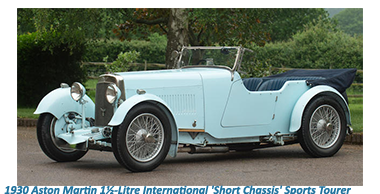 Encouraged by their success, Bamford and Martin decided to channel their efforts into their new venture, with their first management decision to name their name company " Aston Martin."
Encouraged by their success, Bamford and Martin decided to channel their efforts into their new venture, with their first management decision to name their name company " Aston Martin."
Despite their tremendous determination and obvious talents, the partners failed to lead the company too much further and soon found themselves in financial difficulties and were forced to put the company up for sale.
The firm was acquired by the Chamwood family, who also failed to make any financial headway, and soon began to wave the " white flag."
After the Charmwoods came a string of other owners, who, while attracted to the glamour of the company, failed to add that magic touch that would place " Aston Martin" at the forefront.
Despite some partial success during the Thirties, Aston Martin failed to establish a share in the market, through failing to generate significant capital to finance serious development.
![]()
Aston's first post-war model was the DB1, based on the Atom design, but no more than 15 were built.
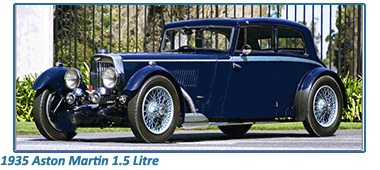 Greater success came with the DB2, created in 1949 and placed on sale the next year, with that Lagonda 2580-cc engine under its hood and a new multi-tube chassis below the closed coupe or drophead coupe body.
Greater success came with the DB2, created in 1949 and placed on sale the next year, with that Lagonda 2580-cc engine under its hood and a new multi-tube chassis below the closed coupe or drophead coupe body.
With the UK auto manufacturing industry coming back to life with a bang after the Second World War, David Brown, who had built himself an empire in the world of tractors, decided that the time was right to move into the car business.
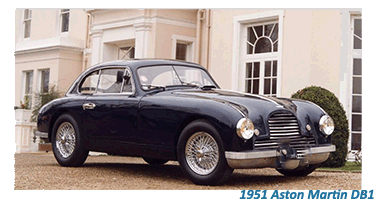 During that same year, Brown also acquired Lagonda, a long-established maker of luxury saloons.
During that same year, Brown also acquired Lagonda, a long-established maker of luxury saloons.
Under the previous management, a post-war model (which went on to become the DB I ) had already been designed, but it was only David Brown's backing which made production possible.
The rebirth of Aston Martin was paralleled by that of Lagonda.
Despite David Brown’s considerable drive and experience and financial backing Aston Martin remained a loss-making enterprise throughout the Fifties and Sixties, with the company only beginning to move into profit during the Seventies.
The lack of profitability was primarily due to Aston Martin’s low production capabilities, meaning that the firm was only capable of turning out just a handful of cars every week.
![]()
David Brown had expected this to be so, placing a higher priority in producing exquisitely designed, and substantially hand-built cars, with all of the Fifties models, the DB2, DB2/4 and DB Mk III models going on to be regarded as classics.
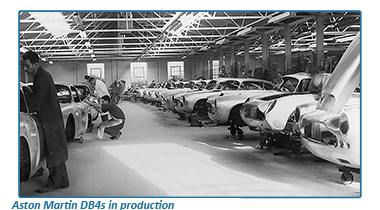 It was during the immediate Fifties that Aston Martin was encouraged to enter the world of motor racing — with considerable success.
It was during the immediate Fifties that Aston Martin was encouraged to enter the world of motor racing — with considerable success.
Having taken over the Tickford body making business in the Fifties, David Brown soon moved all Aston Martin and Lagonda assembly into the Tickford factory at Newport Pagnell, which would remain Aston Martin's home until the Nineties.
From the late Fifties, the DB4 and all its successors became larger, heavier and more "Grand Tourers" than a sports coupe.
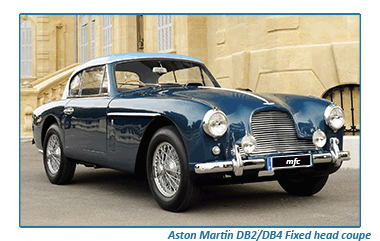 A brand-new V8 engine, first previewed in 1967, completed that transformation. However, even though the cars had become super-fast, and very expensive, the business had still not become profitable.
A brand-new V8 engine, first previewed in 1967, completed that transformation. However, even though the cars had become super-fast, and very expensive, the business had still not become profitable.
David Brown eventually had enough of subsidising Aston Martin, in 1972 selling out to Company Developments, a Birmingham, UK-based consortium.
As had been the case throughout its history, Aston Martin changed hands several more times until the company was finally taken over by the Ford organisation in 1994, remaining in their hands till 2007.






